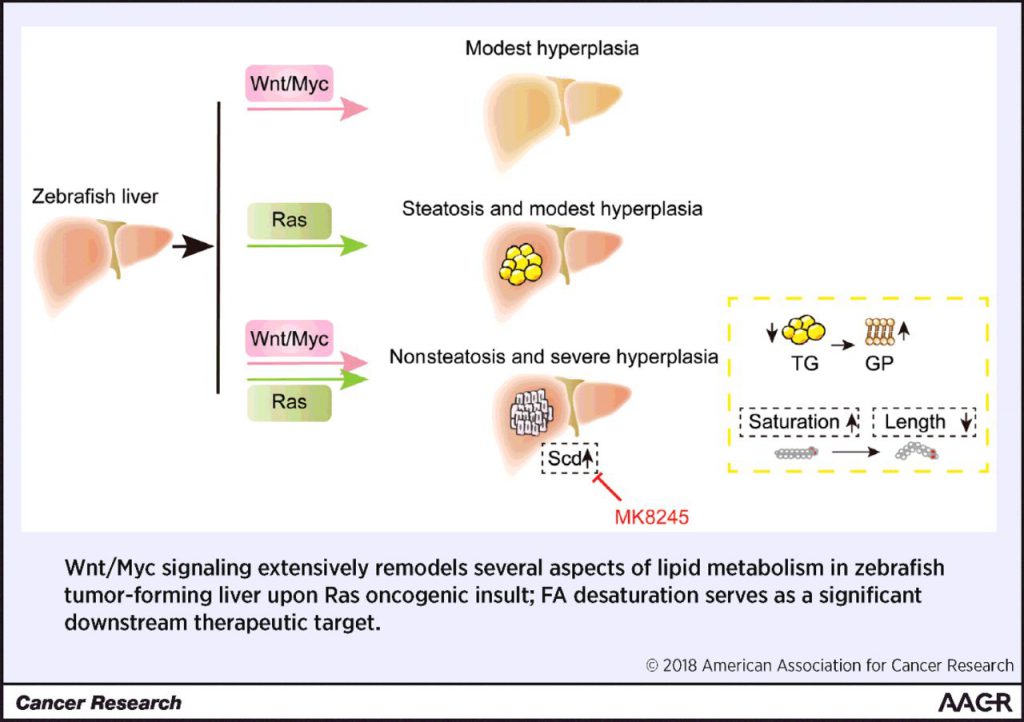From the Journals: Editors’ Picks for October
Back for the month of October are the editors’ picks from the eight esteemed scientific journals published by the American Association of Cancer Research (AACR). These journals showcase peer-reviewed studies in diverse areas of cancer research, extending from basic discoveries to clinical trials. As always, the articles highlighted below are freely available for a limited time.
Additionally, the Cancer Discovery editors proudly present this complimentary collection of impactful clinical oncology research articles that have been published in the journal.
Journal: Cancer Discovery
Utilizing plasma cell-free DNA (cfDNA), often coined “liquid biopsies,” for disease prediction and monitoring holds enormous promise in the cancer field, and fundamental research is required to fully exploit the predictive power of this biospecimen. Using serial cfDNA samples from patients with advanced colorectal cancer treated with anti-EGFR therapies in a phase II trial, the authors developed mathematical models that could predict expected time to progression in individual patients. The authors note that frequent serial collection of cfDNA could help generate more robust mathematical models and provide an opportunity for intervention. Read more about this study in an AACR press release.
Journal: Molecular Cancer Research
PERK Regulates Glioblastoma Sensitivity to ER Stress While Promoting Radiation Resistance
Treatment of glioblastoma multiforme (GBM) often involves radiation, but this therapy can lead to activation of the endoplasmic reticulum stress response (ERSR) pathway, which is frequently misregulated in cancer and can lead to tumor growth and cell migration. While the protein kinase R-like endoplasmic reticulum kinase (PERK) pathway is a key regulator of ERSR, its role in GBM has not been fully elucidated. In this study, the authors found that irradiating GBM cells resulted in the induction of PERK signaling, and that inhibition of PERK could partially rescue these cells from ER stress. The authors posit that PERK serves a dichotomous role as both a death and survival mediator after radiation, and manipulating this fulcrum has the potential to enhance the efficacy of radiation therapy in GBM.
Journal: Cancer Epidemiology, Biomarkers & Prevention
Oral Alpha, Beta, and Gamma HPV Types and Risks of Incident Esophageal Cancer
In this prospective study, the authors investigated the associations between three types of human papillomaviruses (HPVs) and the risk of esophageal cancer. Nearly 100,000 cancer-free participants from the American Cancer Society Cancer Prevention Cohort and the Prostate, Lung, Colorectal and Ovarian Cancer Screening Trial were followed; of them, 125 developed esophageal cancer after an average of 3.9 years of follow-up. Using next-generation sequencing, the researchers evaluated the presence of oral alpha, beta, and gamma HPV in each case, which was matched to three controls. No significant association between the prevalence of oral HPV and esophageal cancer was observed, suggesting that this virus may not contribute to esophageal cancer risk.
Journal: Clinical Cancer Research (October 15 issue)
Mast Cell Activation and KSHV Infection in Kaposi Sarcoma
Kaposi sarcoma (KS), a cancer initiated by infection with the KS-associated herpesvirus (KSHV), requires sustained pro-inflammatory signals for survival. In this study, the authors found that mast cells are pro-inflammatory mediators of KSHV infection in culture. Furthermore, mast-cell activation was observed in KS patients, and one patient treated with mast-cell antagonists saw rapid and durable regression of the lesions. The authors posit that mast-cell antagonists may represent a novel therapeutic approach for patients with KS, especially in resource-constrained settings such as sub-Saharan Africa, where the disease is prevalent.
Journal: Molecular Cancer Therapeutics
Patient-derived tumor xenograft (PDX) mice have been used to evaluate chemotherapeutic drug dosing, but their translation to personalized therapies in human patients has been met with limited success. In this study, the authors established a panel of patient-derived spheroid xenografts (PDSXs) through the subcutaneous injection of tumor-initiating cell spheroids into nude mice. By directly comparing PDX and PDSX models established from the same patients’ colorectal tumors, the researchers found that the PDSX models provided more reliable drug sensitivity results when compared to PDX models. Moreover, preparation of PDSX models was more efficient than the production of PDX models, which is a key limitation of the PDX method. The authors conclude that PDSX mice could model personalized colorectal cancer chemotherapies and help to evaluate investigational cancer therapeutics.
Journal: Cancer Research (October 15 issue)
VEGFC Antibody Therapy Drives Differentiation of AML
Elevated expression of vascular endothelial growth factor c (VEGFC) is a prognostic marker for reduced survival in patients with acute myeloid leukemia (AML), yet the potential of this gene as a therapeutic target remains unexplored. In this study, the researchers found that treatment of CD34+ AML blast cells with a monoclonal VEGFC antibody eliminated their expansion potential and reduced downstream signaling of the MEK/ERK pathway. Furthermore, AML mouse models treated with VEGFC antibody had reduced splenic AML infiltration compared to animals treated with a vehicle. The authors suggest that targeting VEGFC in patients with ALL may provide an alternative therapeutic strategy to high-dose chemotherapy.
Journal: Cancer Immunology Research
Adenosine A2A receptor (A2AR) expression on immune cells facilitates the suppression of antitumor immunity; this protein can be targeted by the investigational adenosine receptor antagonist CPI-444. In this study, the authors found that administration of CPI-444 significantly inhibited tumor growth in mice injected with colon cancer cells, and treated mice displayed a long-term memory response against the tumor antigens. Furthermore, CPI-444 treatment synergized with either anti-PD-L1 or anti-CTLA-4 treatment in colon cancer mouse models. The results from this study and others led to a phase I clinical trial evaluating CPI-444 alone and in combination with the anti-PD-L1 inhibitor atezolizumab in patients with advanced solid tumors.
Journal: Cancer Research (October 1 issue)
Hepatocellular carcinoma (HCC) cells often display activation of Ras and Wnt/Myc signaling pathways; how this activation affects lipid metabolism in the liver, which can be aberrantly regulated in HCC, is not well understood. In this study, the authors found that the combined activation of Wnt/Myc and Ras induced hepatic hyperplasia in zebrafish models and modulated lipid composition in a Ras-dependent manner. Additionally, the authors found that treatment with a stearoyl-CoA desaturase (SCD) inhibitor could inhibit hepatomegaly in zebrafish larvae with activated Wnt/Myc and Ras pathways. The results presented here reveal that Wnt/Myc signaling can remodel lipid composition in HCC models in a Ras-dependent fashion, and that treatment with an SCD inhibitor may provide an alternative avenue for therapeutic intervention in HCC.

Journal: Clinical Cancer Research (October 1 issue)
Sipuleucel-T (Provenge), a type of autologous cellular immunotherapy, has been approved by the FDA for the treatment of men with metastatic hormone-refractory prostate cancer, but its mechanism of action has yet to be fully elucidated. Utilizing information from three trials evaluating sipuleucel-T, the researchers found that patients’ blood samples had antigen-specific proliferation of CD4+ and CD8+ T cells following treatment with the drug. Additionally, the researchers found that the CTL responses were associated with overall survival at week 26 of treatment. From these results, the authors conclude that treatment with sipuleucel-T may induce tumor cell lysis, and that further analyses of the long-lasting CTLs induced by this vaccine are warranted.
Journal: Cancer Prevention Research
The Ashitaba (Angelica keiskei) chalcones 4-hydroxyderricin and Xanthoangelol Suppress Melanomagenesis by Targeting BRAF and PI3-K
Melanoma, which is estimated to affect over 90,000 Americans in 2018, is characterized by the constitutive activation of BRAF/MEK/ERK and PI3-K/AKT pathways. In this study, the authors found that chalcones isolated from ashitaba, a Japanese herb, could suppress BRAF and PI3-K activity in vitro and in melanoma cells. Furthermore, treatment with these chalcones in BRAF-activated melanoma mouse models resulted in reduction of tumor incidence and volume. The authors conclude that the chalcones 4-hydroxyderricin and xanthoangelol are novel agents for the oral treatment of melanoma through the dual targeting of BRAF and PI3-K.
Editor’s note: Last month, the journal Cancer Epidemiology, Biomarkers & Prevention debuted a new article type entitled Progress and Priorities reports. These articles will focus on a specific cancer type and describe the disparities, risk factors, and the latest research to provide readers with a 360-degree view of the disease. The inaugural report focused on uterine cancers – you can read the report here.



